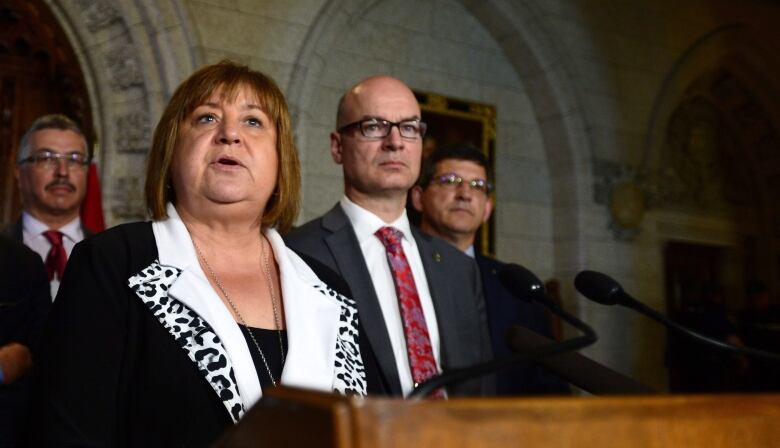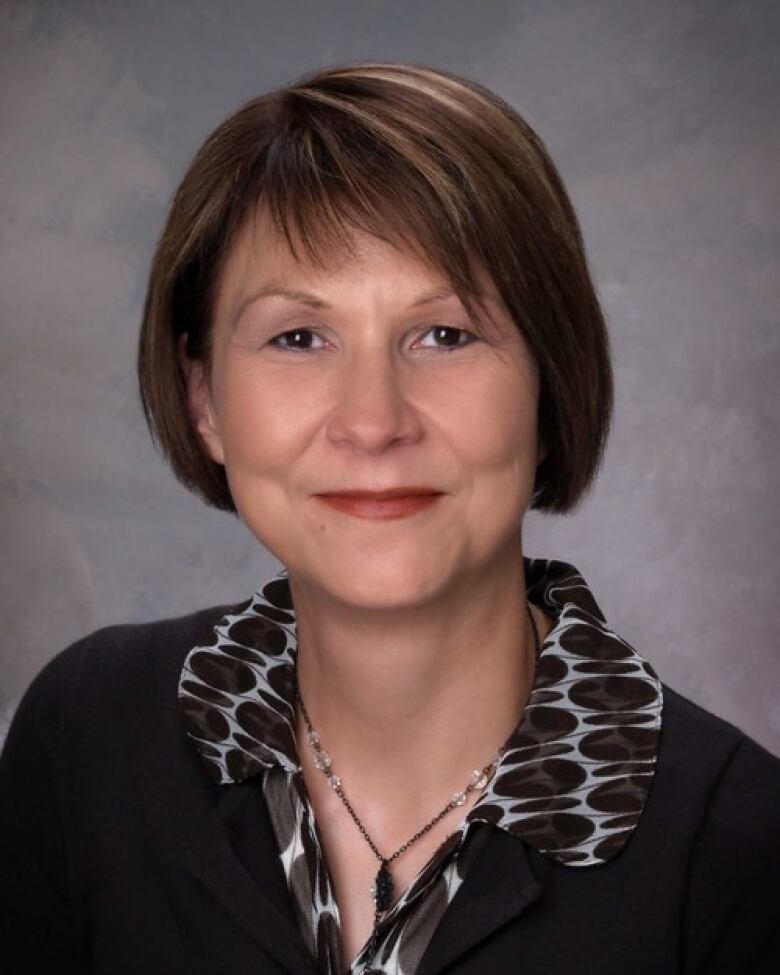Indigenous people need resources 24/7 to cut suicide rates, committee recommends
Parliamentary committee makes 28 recommendations after more than a year of consultations, research

Canada's Indigenous people need resources round the clock, andculturally appropriate programs and services as part of a suicide prevention plan to reverse "decades of unjust policies," a parliamentary committee says the latest of many federal government calls to action, with previous ones going unheeded.
The House of Commons standingcommittee on Indigenous and northern affairs made 28 recommendations in a report released Monday, which followed more than a year ofresearch and public consultations.
We need to send a message to Indigenous Canadians, and especially to young Indigenous people, that their lives have value, that they matter.- MaryAnnMihychuk, Liberal MP
"We need to send a message to Indigenous Canadians, and especially to young Indigenous people, that their lives have value, that they matter, and to hold on to hope," said Liberal MPMaryAnn Mihychuk,chair of the committee.
"We recognize that they are losing hope because they have difficult lives and are suffering from intergenerational trauma as the result of decades of unjust policies, and that we must act together to restore hope.''
Suicide is a leading cause of death among Indigenous people, according to the Toronto-basedCentre for Addiction and Mental Health, whichsubmitted a brief to the committee.Ratesof death by suicide among First Nations people are two times higher than the nationalaverage,CAMHsaid, citing Statistics Canada data.
As part of its work, the committee heard from 99 witnesses, including over 50 indigenousyouth representatives, First Nations, Inuit andMtisleaders,academics and health organizations.
- 'Go kill yourself': Social media messages encourage Indigenous youth to commit suicide
- Attawapiskat declares state of emergency over spate of suicide attempts
- 'Don't give up': Inuit youth hopeful about federal study on suicide
MPson the committee said the witnesses shared difficult personalstories of suicide.
Health Minister Jane Philpott, in her testimony,called the high rates of suicide in Indigenous communities a "public health crisis" that hasitsroots in "long-standing social inequity ... in colonialism, racism, assimilation, residential schools, intergenerational trauma, povertyand so many other issues."
Philpottsaid programs in Indigenous communities have been "under-resourced" for a long time there hasn't been enough money tobuild new facilities andrepair old ones, or to hire and train enough professionals.

She said the $270-million pledged in the 2016 budget to help with health facilities for First Nations was "only a drop in the bucket in terms of what the need is."
The report found that intergenerational trauma was one of the key factors in the prevalence of suicide and mental health issues in Indigenous communities, and a key themeof the recommendations was to giveIndigenous people more control over their own destinies as a way to improve overall conditions in their communities.
- 'We Matter' campaign speaks directly to Indigenous youth contemplating suicide
- MPs head toNunavutto study 'tragic epidemic' of suicide
- Ontario chief suggests class action lawsuit to stop Indigenous youth suicides
"Self-government and cultural continuity within Indigenous communities has been shown to be an important hedge against suicide," the report said.
The government is urged to review its land claims policy andhelp facilitate "the goal of self-determination." The report also made clear that all services, programs and policies must be culturally specific.
To addressthe suicide crisis, recommendations include:
- Developing and funding Indigenous-specific youth suicide prevention strategies.
- Ensuringresources are available after hours and on weekends when emergencies typically occur.
- Ensuringmental health services are "trauma-informed" and provide "safe spaces for young people to disclose adverse childhood events."
- Improving infrastructure for emergency responders to locate and reach individuals in distress.
- Address mental health and substance abuse issues with increased investment in culturally appropriate infrastructure and programming.
'Colonial patterns'
But for all its careful consideration, the report doesn't break any new ground in the fractious relationship between the government and Canada's Indigenous peoples, said Cindy Blackstock.
"Why does the government not do betterwhen it knows better for Indigenous children?" said Blackstock, executive director of theFirst Nations Child and Family Caring Society and a professor at Montreal's McGill University. "Government processes and policies are slow to change and ... thus it continues to replicate colonial patterns of thinking and behaving."
More than 20 years ago, the Royal Commission on Aboriginal Peoples reached much the same conclusions as the new report, as did the Truth and Reconciliation Commission's 94 calls to action in 2015.

"In the vast majority of cases, the recommendations reiterate solutions that have been on the books for decades particularly those directed at addressing inequities in public services for children/youth, such as education, child welfare and access to basics like proper housing and water," Blackstock told CBC News.
Blackstock points to aCanadian Human Rights Tribunalruling in January 2016 that foundthe federal government discriminatesagainst First Nation children on reserves by failing to provide the same level of child welfare services that exist elsewhere something called Jordan's Principle. But as of last month, the tribunalhas issued three non-compliance orders to the federal government.
Blackstockwould like to see the government apply Jordan's Principle to all public services.
"I wishI could be more optimistic, but when the government has failed to comply with legal orders it raises serious questions about the degree to which they will implement recommendations within their authority," Blackstock said. "Failure to act can, and likely will, have life and death consequences."












_(720p).jpg)


 OFFICIAL HD MUSIC VIDEO.jpg)
.jpg)



























































































